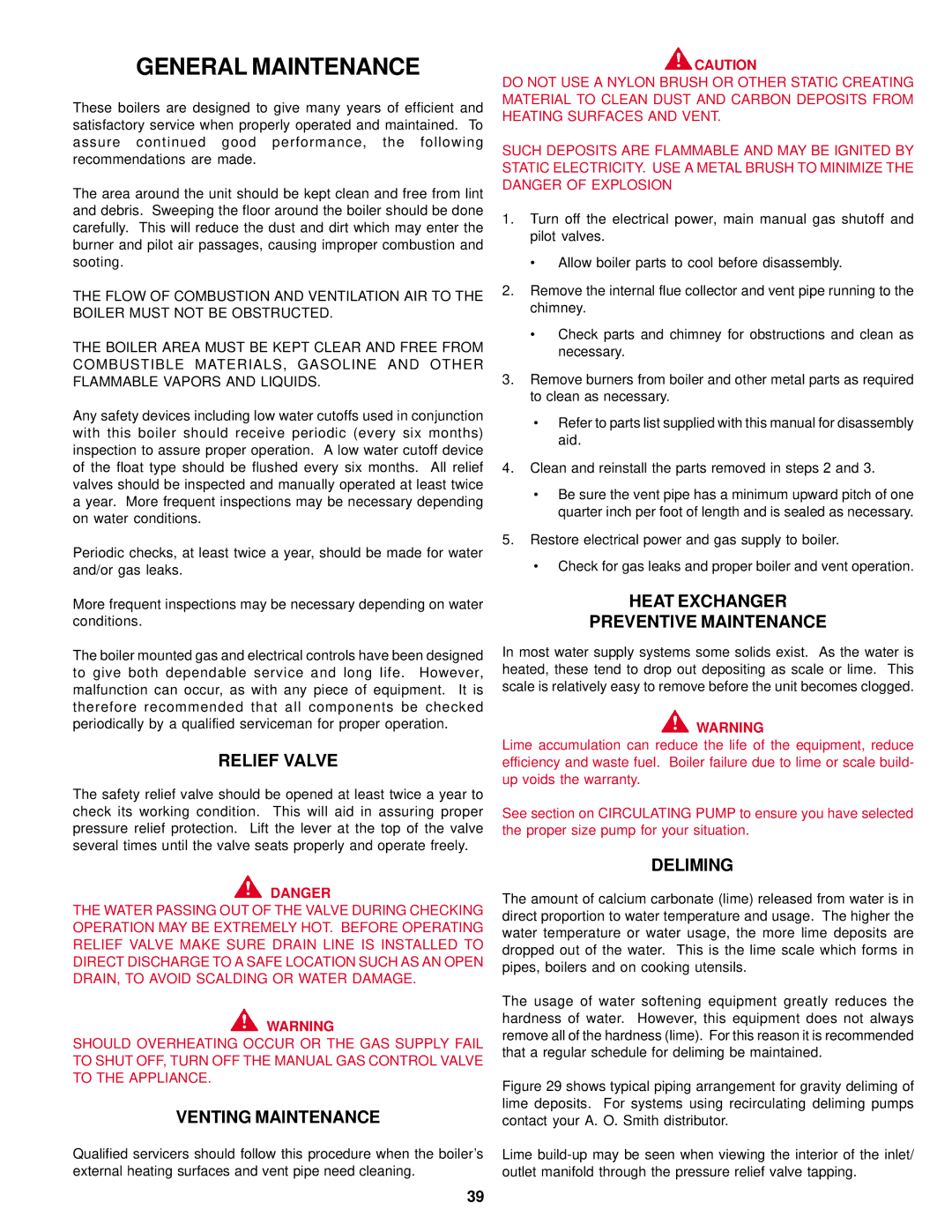DB/DW-720-1810 specifications
A.O. Smith has a longstanding reputation for quality and innovation in the water heater industry, and the DB/DW-720-1810 model exemplifies these values. This particular water heater is designed to provide reliable hot water, making it suitable for both residential and commercial applications. Its impressive features and cutting-edge technologies set it apart from conventional models.One of the primary features of the A.O. Smith DB/DW-720-1810 is its energy efficiency. It operates using advanced insulation technologies, minimizing heat loss and promoting energy savings. This model is designed with a high-efficiency burner that substantially reduces energy consumption while maintaining optimal performance. It also complies with industry standards for energy efficiency, ensuring that users can enjoy lower utility bills without sacrificing comfort.
The DB/DW-720-1810 is equipped with a robust tank designed to hold an ample supply of hot water. With a capacity of 75 gallons, it is ideal for households with high demand, such as multi-bathroom residences or commercial establishments. This large capacity ensures that hot water is readily available for various activities, from bathing to cleaning.
User control is another notable characteristic of the A.O. Smith DB/DW-720-1810. The model features an intuitive digital display that allows users to monitor and set water temperatures easily. This interface not only enhances usability but also promotes safety, preventing scalding by allowing users to adjust the temperature to their preference.
Durability is a key consideration in the DB/DW-720-1810’s design. It is built with high-quality materials and features a corrosion-resistant tank, ensuring longevity even in challenging water conditions. This resilience is further supplemented by A.O. Smith's advanced anode rod technology, which helps battle corrosion and extends the lifespan of the water heater.
Lastly, maintenance is simplified with this model. A.O. Smith has designed the water heater for easy access to serviceable parts, making routine maintenance more convenient and less time-consuming. Coupled with warranty options that provide peace of mind, the DB/DW-720-1810 stands out as a dependable choice.
In summary, the A.O. Smith DB/DW-720-1810 combines energy efficiency, significant capacity, user-friendly controls, durability, and low maintenance needs, making it an exceptional option for those needing a reliable hot water solution.

